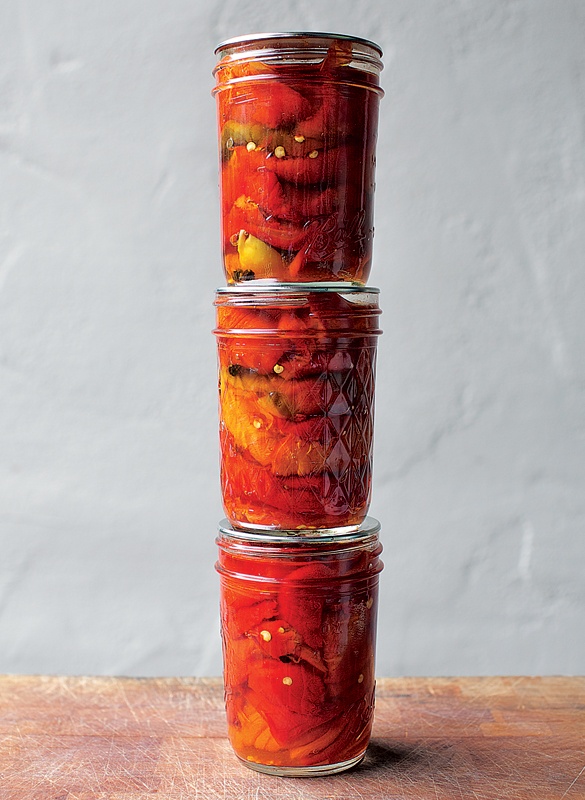
David Kent
“En escabeche” is the Spanish for “marinated” and derives from an Arabic term, al-sikbaj, for a sweet-sour dish that arrived in Spain with the Moorish conquest. Wear rubber gloves when you peel and seed the jalapenos. I didn’t once and regretted it until the next afternoon. Green jalapenos would also work.”
3 pounds red jalapeno peppers
2 cups white-wine vinegar
1 tablespoon honey
1 teaspoon kosher salt
1 teaspoon dried Mexican oregano
4 cloves garlic, peeled
20 black peppercorns
4 small bay leaves
4 tablespoons extra-virgin olive oil
1. Scorch the whole peppers directly over wood coals or underneath the broiler, turning them until they are blackened and wrinkled all over. Place them in a sealed container to steam for 15 minutes.
2. Once they’re cool, cut away the stems and, wearing rubber gloves, slice each jalapeño open to remove the seeds—the hottest part—and white connective tissue. Peel or rub off the charred skins. Tear the cleaned peppers into strips. Set aside.
3. Combine the vinegar, honey, salt and oregano in a saucepan, and bring to a boil. Turn off the heat, and let it sit, covered, for 15 minutes.
4. Place a garlic clove, 5 peppercorns and 1 small bay leaf into each of four prepared 1/2-pint jars. Loosely pack the peppers into the jars, leaving 3/4 inch headspace.
5. Bring the vinegar syrup back to a boil, and ladle the hot liquid through a strainer (to catch the oregano) into the jars, leaving a generous 1/2 inch headspace. Run a bamboo skewer or other thin implement around the inside edge of the jar to release air pockets. Pour a tablespoon of olive oil into each jar, and top up with more syrup to leave 1/2 inch headspace. Do not overfill.
6. Wipe the rims clean with a paper towel moistened with vinegar, seal, and process in a boiling-water bath for 10 minutes. Alternatively, for a firmer texture, process in a hot water bath, between 180 and 185 degrees, for 30 minutes.
Yields 2 pints.
David Kent grew up eating preserved produce in Eastern Tennessee. He’s the author of “Saving the Season” [Knopf, 2013] and writes a blog by the same name.
